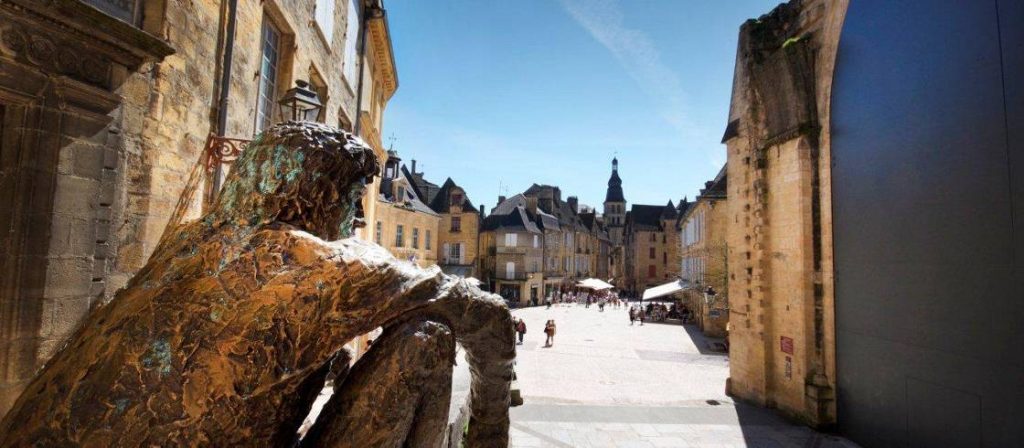Sarlat, France is a fabulous historical travel destination. What can you see in Sarlat and Dordogne area? On the north bank of the Dordogne and a few minutes downstream from Castelnaud-la-Chapelle, is this 12th-century castle built by the Barons of Beynac. Just one look at it and you’ll understand why attackers might have been put off: It’s on a vertical limestone crag, and even now visitors have a hard time getting up there! If you make it you’ll have the pleasure of a 30-minute guided tour which brings the austere romanesque keep to life. The residences added to this monolithic structure include apartments from the 1600s, with carved woodwork and a painted ceiling still intact. See also the Salle des Etats with its renaissance fireplace and the adjoining oratory with walls entirely decorated with frescoes from the 1400s.
House-hunters to Sarlat should stroll along Rue des Consuls, which has a number of impressive mansion houses that are testament to Sarlat’s growth during the Middle Ages. From being a small community controlled by the church, it had, by the mid-1500s, evolved into a prosperous market town popular with wealthy merchants. Further on you’ll see elegant buildings including the 16th-century Hotel de Mirandol with its imposing doorway; the 14th-century Hotel Plamon with its mullion windows; and the 15th-century Hotel de Vassal with its double turret.
Ecomusee de la Truffe, Sorges: A 30-minute drive north of Perigueux is the Dordogne’s self-proclaimed truffle capital. Its museum (ecomusee-truffe-sorges.com) unravels the mysteries behind the black Perigord truffle – sold fresh in season for around €900 (£680) per kg. Buy pear and truffle jam, green tomato and truffle chutney, truffle mustard, honey and ice cream in its boutique. End with a walk along the Sentier des Truffieres, a 1.8-mile, truffle-rich trail that winds through vineyards, walnut plantations and meadows.
Looking for hotels in Sarlat-la-Caneda? The origin of the abbey is lost in the legends. It exists since the ninth century, forming part of the six great abbeys of Perigord (Paunat, Belves, Saint Front de Perigueux, Brantome, Terrasson). The Carolingian Abbey of Sarlat is the only one that was saved from the Vikings, located away from the Dordogne River and its tributaries. It was able to remain independent and, in the year 1153, was put under the direct protection of the Holy See in Rome. In the year 1317, the abbey was the seat of the new bishopric created by Pope John XXII. The abbey church was transformed into the cathedral of the diocese of Sarlat. From there began the architectural transformation of the city with the construction of a parish church as well as numerous manors. From the fourteenth century on, bishops and consuls shared power until the Revolution. Sarlat played an important role during the Hundred Years’ War with its status as an episcopal city. The town became a reserve for men of arms, ammunition and provisions. The city was fortified, but it was also defended by the castles located in the surroundings, and it could lend aid to other cities besieged by the English: Belves, Domme, Montignac. However, Sarlat was taken by the English as a result of the Treaty of Bretigny in the year 1360. It joined the King of France again ten years later, when the Constable of Guesclin defeated the English. If the victory of Castillon put an end – in the year 1453 – to the Hundred Years’ War, the wars of religion caused additional damage a century later. The city played the same role as before, yet had to surrender twice and suffer the exactions of the captain of Vivans and Viscount Turenne. See extra info at Sarlat hotels.
